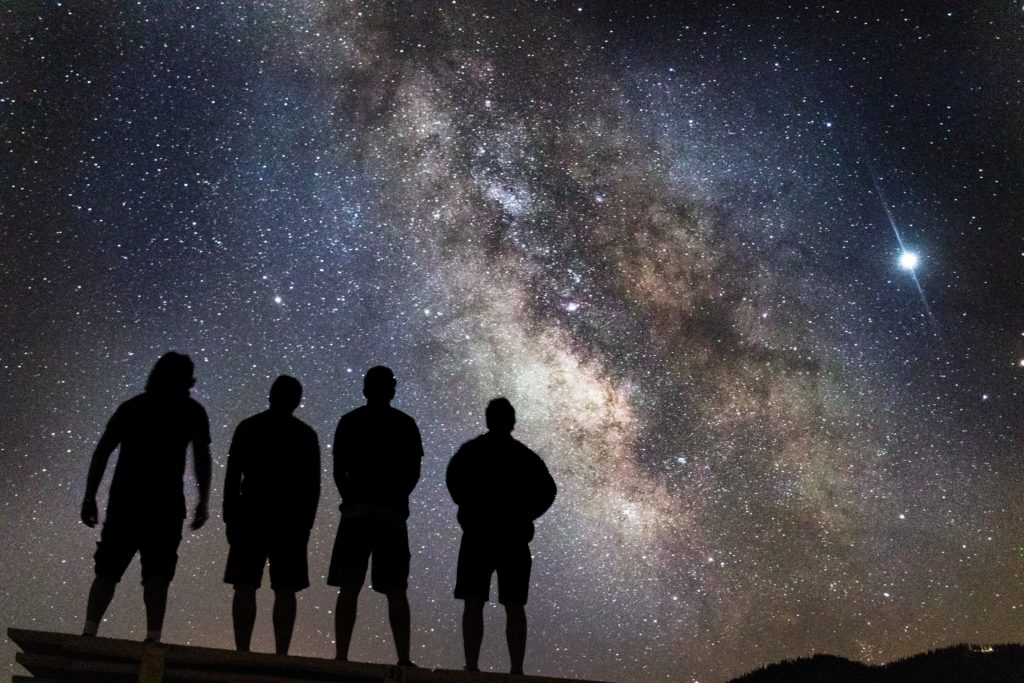
Look up at the sky - the benefits of stargazing
Looking for a new hobby that costs absolutely nothing to do! Take up stargazing and you’ll find yourself with a relaxing past-time during the evenings. All you need to do is find a dark sky location, ideally somewhere away from light pollution (from house lights, lamp posts, floodlights and other bright light), and your eyes! Yep just your naked eyes can see approximately 2,500 stars without the need for telescopes. It doesn’t matter if you live in a town or city location though as you can still see over 100 stars on a clear night so can still take advantage of stargazing.
Why is stargazing good for your eyes?
Stargazing can actually help sharpen your eyesight because the more you observe the stars in the sky, the better you can become at seeing all the faint details. During the day, in preparation for your nighttime hobby, you can exercise your eyes by focusing on details in the distance such as counting the birds sitting in the branches of a distant tree. Then when the sunsets you will be ready to gaze in to the night sky and see the wonderful constellation of stars, planets and satellites. It can take your eyes around 40 minutes to get its ‘night vision’ when the eyes dilate fully and acclimatise to low-light conditions so this would be a perfect time to set up your stargazing station. Find a comfortable seat/sitting position, make sure you’ve got layers to keep you warm and drinks and snacks to keep you fuelled up.
Why is stargazing good for you?
Stargazing can be a great activity for promoting good mental health and wellbeing. Not only does it get you out in to nature and enjoying the many health benefits of the fresh air, it also allows your mind to switch off from your day and so can help decrease stress, anxiety and depression. Gazing at the stars at night can help increase your attention span whilst it also frees your mind to wonder, happiness and creativity. Being in the great outdoors and finding a spot away from artificial light for your new star-spotting hobby will also help improve the quality of your sleep. Therefore allowing your mind and body to recharge.
Lastly, you should get your friends and family involved in a stargazing adventure with you so that you and them can all benefit from this exhilarating star map activity.
What can I look for?
Just by popping outside to stargaze on a regular basis you will start to notice patterns in the stars, the movement of planets and how the moon changes into its different phases. Here we have done some star chart research into some astrological events that will be happening in 2022 so that you can take advantage of stargazing all year round.
February
16th – The Snow Moon is the name of the full moon this month.
27th – Wake up early on this date to get a perfect view of Mars and Venus.
March
18th – The Worm Moon is this month’s full moon.
20th – Venus will shine at its brightest tonight.
27th – British Summer Time (BST) begins so remember to put your clocks to ‘spring’ forward! The morning will now have one hour less of daylight and the evening one hour more.
April
16th – This month’s full moon is called the Pink Moon but I’m afraid it wont actually change colour in accordance – it is named after the pink phlox flowers that will start to bloom around now.
22nd & 23rd – The spectacular Lyrid Meteor Shower will dazzle the sky on both these nights – let’s hope there’s no clouds!
May
5th & 6th – The impressive Eta Aquariid Meteor Shower will appear in our skies on both nights and if you’re lucky you will see around one meteor per minute.
16th – The Flower Full Moon will appear tonight (named by native American tribes because it is appears when the flowers start to bloom) but it also coincides with a total lunar eclipse so the moon will appear darker than normal.
June
14th – Don’t miss the Strawberry Full Moon on this night.
21st – It’s the June Solstice on the 21st — the longest day of the year so you may need to wait a little longer for your stargazing experience!
July
13th – The Buck Full Moon on this night is a super moon and will appear 30% brighter than usual and appear 14% larger.
August
12th – The new moon that will appear on this night is called the Sturgeon Moon.
12th & 13th – The wonderful Perseid meteor shower reaches its maximum on these night so expect to be dazzled by between 100–150 meteors per hour.
14th – Saturn will be visible in the sky from sunrise to sunset today.
September
10th – The Harvest Full Moon will be visible tonight.
26th – The planet Jupiter will be visible throughout the night as long as the clouds keep at bay!
October
8th & 9th – Draconid Meteor Shower will give you an opportunity to spot shooting stars in the dark night sky.
9th – This month’s full moon is called the Hunters Moon so pick a time of night to pop out and see this wonder.
21st & 22nd – Another meteor shower for October is the Orionid Meteor Shower so if you missed the earlier one in the month be sure to catch this one instead for the brightest stars shooting through the sky.
November
8th – The Full Beaver Moon will be out tonight.
17th & 18th – Another starlight show of shooting star clusters, the Leonid Meteor Shower, will be visible on these nights.
December
8th – Mars will lie on the opposite side of the earth to the sun, shining brightly in the sky all night. The new moon, the Cold Moon, will be visible tonight too.
13th & 14th – The Geminid Meteors will give us a beautiful display of bright stars in the sky on both evenings.
